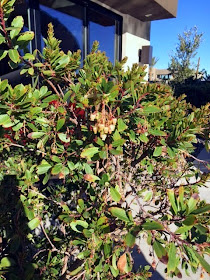Traditionally, by the middle of March at around the 2000 foot elevation in southern Nevada, we will have a 90% chance that there will be no more frost. This is normally the date we use for planting warm season vegetables.
You can usually sneak them in a little earlier if you watch the weather forecasts or give them some protection. Tomatoes are warm season crops and they can suffer from chilling injury. This is damage to the plants if temperatures drop close to the same temperature in your refrigerator. Even a bit higher than this.
Hot microclimates in the yard can support please vegetables earlier than the middle of March. So if they are going in a spot that is West or South facing, you can put them in earlier.
Watch for temperatures below 50° F. If temperatures are going to drop this low, there is a potential for chilling injury.
You can use some hot caps and cover them at night when the sun goes down.
You can use a crop cover and lay it over the top of them. These crop covers will give you an extra 5° F over the lowest temperature during the night.
You can throw a light blanket over them if you push in some short stakes to keep the blanket from crushing plants.
Or you can buy the plants and leave them in their containers. Put them outside during the day and move them indoors at night. This way you can delay planting them if you think there might be some low temperatures coming.
 |
| Strong and vigorous tomato transplant |
You can usually sneak them in a little earlier if you watch the weather forecasts or give them some protection. Tomatoes are warm season crops and they can suffer from chilling injury. This is damage to the plants if temperatures drop close to the same temperature in your refrigerator. Even a bit higher than this.
Hot microclimates in the yard can support please vegetables earlier than the middle of March. So if they are going in a spot that is West or South facing, you can put them in earlier.
Watch for temperatures below 50° F. If temperatures are going to drop this low, there is a potential for chilling injury.
You can use some hot caps and cover them at night when the sun goes down.
.JPG) |
| White woven crop cover rolled back showing the difference in plant growth a crop cover can make in spring |
You can throw a light blanket over them if you push in some short stakes to keep the blanket from crushing plants.
Or you can buy the plants and leave them in their containers. Put them outside during the day and move them indoors at night. This way you can delay planting them if you think there might be some low temperatures coming.

.JPG)





